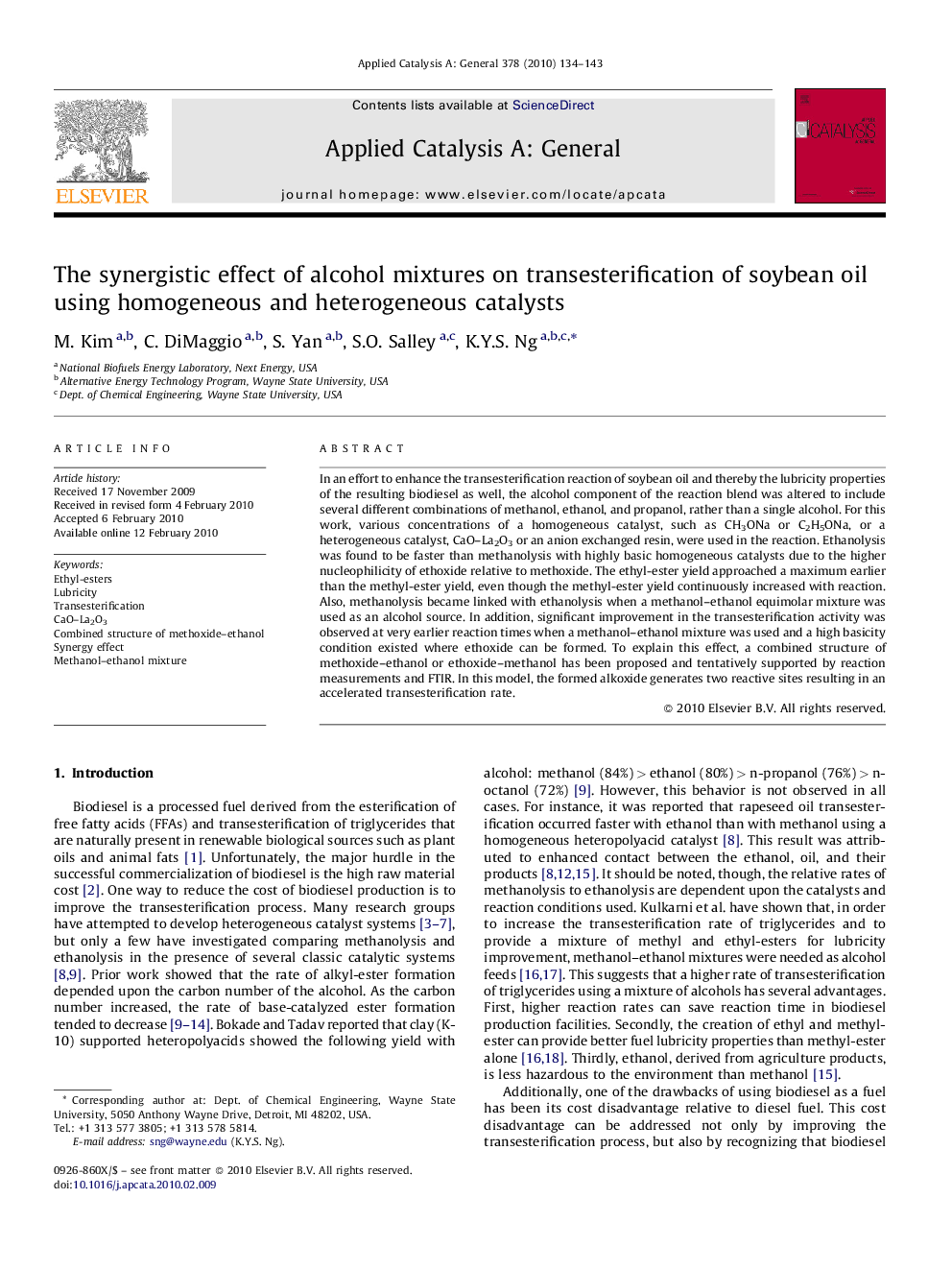| کد مقاله | کد نشریه | سال انتشار | مقاله انگلیسی | نسخه تمام متن |
|---|---|---|---|---|
| 42189 | 45914 | 2010 | 10 صفحه PDF | دانلود رایگان |

In an effort to enhance the transesterification reaction of soybean oil and thereby the lubricity properties of the resulting biodiesel as well, the alcohol component of the reaction blend was altered to include several different combinations of methanol, ethanol, and propanol, rather than a single alcohol. For this work, various concentrations of a homogeneous catalyst, such as CH3ONa or C2H5ONa, or a heterogeneous catalyst, CaO–La2O3 or an anion exchanged resin, were used in the reaction. Ethanolysis was found to be faster than methanolysis with highly basic homogeneous catalysts due to the higher nucleophilicity of ethoxide relative to methoxide. The ethyl-ester yield approached a maximum earlier than the methyl-ester yield, even though the methyl-ester yield continuously increased with reaction. Also, methanolysis became linked with ethanolysis when a methanol–ethanol equimolar mixture was used as an alcohol source. In addition, significant improvement in the transesterification activity was observed at very earlier reaction times when a methanol–ethanol mixture was used and a high basicity condition existed where ethoxide can be formed. To explain this effect, a combined structure of methoxide–ethanol or ethoxide–methanol has been proposed and tentatively supported by reaction measurements and FTIR. In this model, the formed alkoxide generates two reactive sites resulting in an accelerated transesterification rate.
Methanolysis becomes linked with ethanolysis when a methanol/ethanol equimolar mixture is used as an alcohol source. Significant improvements in the transesterification activity were observed when mixed alcohol blends were employed. To explain this effect, a combined structure of methoxide–ethanol or ethoxide–methanol has been proposed and subsequently confirmed by reaction measurements and FTIR.Figure optionsDownload high-quality image (101 K)Download as PowerPoint slide
Journal: Applied Catalysis A: General - Volume 378, Issue 2, 30 April 2010, Pages 134–143